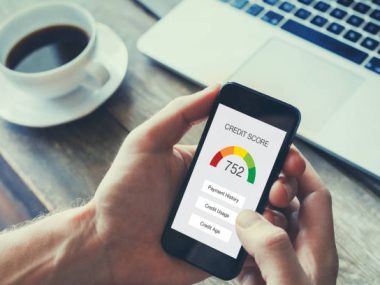Veterans have served our country with honour, and as a nation, we must support them in return. For many veterans, transitioning back to civilian life brings a set of financial challenges, including the accumulation of debt. Veteran Debt Relief Grants offer a lifeline to our heroes, enabling them to manage and overcome financial obstacles without the burden of repayment.
In this post, we’ll dive into these grants, who is eligible, how to apply, and what types of debt they can address.
What are Veteran Debt Relief Grants?
Veteran debt relief grants provide crucial assistance to veterans in need. Unlike conventional loans requiring repayment, these grants serve as financial aid that veterans cannot repay. This aspect is vital as it ensures that veterans can truly reduce their financial burden without the worry of accruing additional debt.
Financial struggles can be a significant hindrance for veterans, impacting their quality of life. These grants are designed to support various forms of debt, such as:
- Medical expenses, which can accumulate due to long-term care or recovery from injuries
- Credit card debts that may have escalated during or after service
- Personal loans taken to meet emergencies or during the transition to civilian life
Organizations offering these grants recognize the unique sacrifices of veterans. They often require:
- Demonstrable proof of military service
- Evidence of financial need
- Participation in financial literacy programs
To elaborate, these bodies ensure that funds are allocated effectively to those veterans who need them the most. Some grants are specific to certain groups, such as disabled veterans or those with service-related injuries, ensuring targeted support.
Examples of veteran debt relief initiatives include:
- The Operation First Response which supports wounded veterans and their families
- The American Legion Temporary Financial Assistance program for minor children of veterans
- Grants from the Veterans of Foreign Wars Unmet Needs program
Veteran debt relief grants represent a critical resource for many former service members. They demonstrate our society’s gratitude and recognition of their sacrifices by aiding in their financial stability.
How Can I Determine If I’m Eligible For A Veteran Debt Relief Grant?
Determining eligibility for veteran debt relief grants requires research and self-assessment. The Department of Veterans Affairs (VA) is the central hub for information on such programs, setting forth clear criteria that applicants must meet.
Before delving into specific programs, you should:
1. Verify your military service aligns with grant requirements.
2. Evaluate your financial situation against income qualifications.
3. Explore demographic-specific grants.
Veteran Service Organizations (VSOs) are invaluable in this process. They not only point you to the right resources but also help interpret eligibility criteria, which might include:
- Service in specific conflicts
- Income thresholds
- Proof of financial hardship
Steps to determine eligibility include:
- Contacting the Department of Veterans Affairs for guidelines and programs
- Consulting with a VSO for personalized assistance
- Reviewing restrictions, such as service era specifications
As a final point, assessing eligibility is the first step towards easing financial strain through these specialized grants. It’s essential to leverage available resources and expert advice to navigate the eligibility landscape successfully.
Where Can I Apply For Veteran Debt Relief Grants?
The journey to applying for Veteran Debt Relief Grants begins with knowing where to look. Several avenues are available for veterans to explore and make their applications:
1. Department of Veterans Affairs (VA)
2. Nonprofit veteran support organizations
3. Private entities dedicated to veteran affairs
To ensure a smooth application process:
- Visit official websites for comprehensive information and application forms.
- Check eligibility requirements and gather necessary documents beforehand.
Key places to apply and seek guidance include:
- The VA’s official website where they list financial aid options
- Local Veterans Service Offices for hands-on assistance
- Educational institutions that may have veteran-specific resources
To encapsulate, finding the right place to apply is as important as the grant itself. Utilize every available resource, online and offline, to ensure the best chance of receiving the aid you deserve.
What Types Of Debt Can Be Addressed With Veteran Debt Relief Grants?
Veteran Debt Relief Grants are versatile and can be tailored to the specific kinds of debt veterans may face. These grants can provide a much-needed reprieve, whether it’s unsecured debt, educational loans, or even housing-related arrears.
Notably, types of debt covered include:
1. Unsecured debts, such as credit card balances and payday loans
2. Educational debts, including student loans
3. Housing-related debts like rent or mortgage arrears
4. Legal expenses, which can sometimes be overwhelming
It is worth emphasizing that some grants address specific debts, so understanding your financial situation is crucial.
To illustrate, here are some examples of assistance provided by grants:
- The National Association for American Veterans assists with utility and medical bills
- The USA Cares Military Assistance Program helps with basic needs like food and housing
Summarizing this section, a thorough understanding of one’s debts is necessary to identify appropriate grants. This can lead to meaningful financial relief and greater financial stability.
Are There Specific Documents Needed When Applying For A Veteran Debt Relief Grant?
Precision in documentation is a cornerstone of successfully applying for any financial aid, including Veteran Debt Relief Grants. To validate your eligibility and financial needs, having the correct papers ready is essential.
Important documents you’ll need are:
1. Proof of military service, typically the DD Form 214 document
2. Comprehensive financial documents to demonstrate your economic condition
3. Personal ID for identity verification
4. Records of previous grants or benefits to ensure eligibility
A checklist of documents might include:
- Your most recent tax returns
- A list detailing all current debts and creditors
- Medical records or disability certifications if applicable
In summarizing, meticulous preparation of documentation is crucial in navigating the application process for debt relief grants efficiently. Every piece of paper holds the potential to move your application forward to a successful grant award.
Navigating Towards Financial Stability
For veterans swimming against the tide of debt, relief grants are not just about economic assistance; they’re about the respect we accord to their service and the peace of mind that comes with financial stability.
With the right information and support, these grants can serve as a beacon of hope, illuminating the path to a debt-free life.
Whether you’re a veteran struggling with medical bills, educational debt, or just trying to make ends meet, remember that there are resources available designed specifically for you. Unveil the opportunities of Veteran Debt Relief Grants, and take a step toward reclaiming your financial freedom today.
Please Help Share This Post









